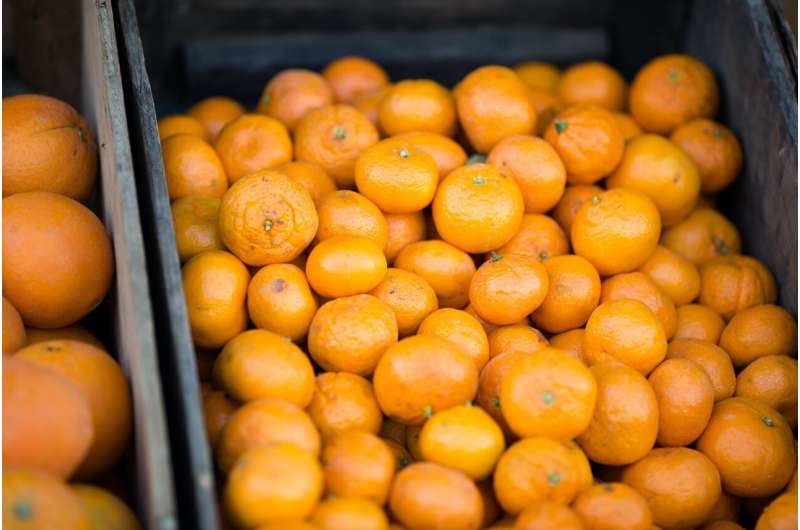This article has been reviewed according to Science X's editorial process and policies. Editors have highlighted the following attributes while ensuring the content's credibility:
fact-checked
peer-reviewed publication
trusted source
proofread
Addressing post-harvest storage issues of Shiranui mandarins

Citrus packed and marketed in the United States is generally washed and sanitized on a commercial packing line for decay control, food safety, and appearance reasons. The purpose of a new study was to evaluate the use of different coating protocols and storage temperatures suitable for Shiranui mandarins in a commercial packing house. The research was the result of the recognition that special procedures would be needed for this highly valuable but more difficult to handle mandarin variety.
The work is published in the journal HortTechnology.
Shiranui presented a particular challenge in doing this because of a tendency to develop off-flavors during storage that can be exacerbated by both the application of coatings during the packing process and the need to hold the fruit for extended periods after packing to reduce acidity. The research examined different coating protocols designed to find a means to process Shiranui mandarins commercially that maintains the sensory quality of this high-value fruit.
Several tests were conducted to evaluate different wax application and storage protocols: pack wax (PW) and storage wax (SW) were used with different concentrations of solids. Fruit was also stored at different temperatures to evaluate the effects on weight loss. Results indicate that the initial wax was not an important factor but the use of SW instead of either type of PW as the final coating led to greater internal oxygen levels in the fruit and less off-flavor formation. The lessening of off-flavor by SW was significant only after 20° C of storage, when off-flavor was greatest.
The work indicates that Shiranui mandarins are particularly prone to off-flavor development relative to other mandarins that have been studied in the past. One possible reason for this is the very thick peel that is present in this fruit that may act to reduce gas exchange and promote low oxygen conditions that enhance off-flavor formation.
Maintaining Shiranui at a cold temperature (such as 7 °C) during its entire postharvest life would reduce the chance for flavor loss, but could be difficult for retailers and consumers to achieve. Application of a storage wax with a low percentage of solids, as done in the study, may be another approach.
First author David Obenland is a plant physiologist working for the USDA in Parlier, CA, who performs research to maintain postharvest fruit quality. Co-author Mary Lu Arpaia is Associate Professor of Extension, at the University of California–Riverside and works on germplasm conservation, plant breeding, postharvest biology, fruit quality, and sensory quality.
More information: David Obenland et al, Managing Postharvest Storage Issues in 'Shiranui' Mandarin, HortTechnology (2023). DOI: 10.21273/HORTTECH05133-22
Journal information: HortTechnology
Provided by American Society for Horticultural Science




















